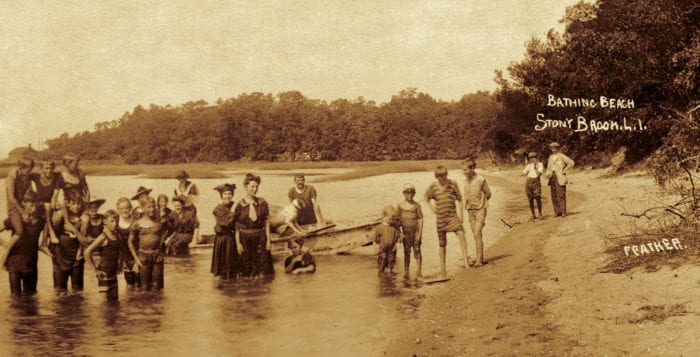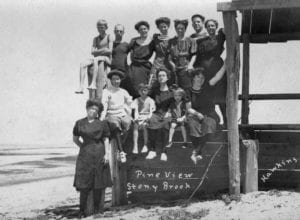By Ava Himmelsbach
Long Island prides itself on its beautiful weather — but, more specifically — on its gorgeous summers.
That is why this past weekend, Port Jeff locals and visitors were asked: “What do you like to do during the summertime on Long Island?
Photos by Ava Himmelsbach
Carolyn and Julie
Many Long Island residents thrive in the summer weather and enjoy spending time outdoors when the sun is out. Julie highlighted her relaxing visits to the local beaches: “We just got a parking permit for the beach, so we go on the beach, drive on the beach, that’s fun.” She, also, noted her enjoyment of going fishing and eating out.
“She’s from Florida,” Julie added with regard to Carolyn, who replied, “I used to live here!”
Amanda, Michelle, Kaitlyn and their children
“My favorite thing to do in the summer is go to the Shirley Beach splash pad with the toddlers,” Michelle said.
She loves that spot due to its free admission combined with the opportunity of play time outside for her children.
“Going to the ocean, [especially] Smith Point,” Kaitlyn added. She mentioned that she enjoys the beaches, closer to home, as well. “My favorite thing is to go to the parks around us,” Amanda stated.
Gallya (right,) and her friends, Sima and Sandra
Gallya, a Long Island resident, was joined by her visiting friends Sima and Sandra, who had just arrived on the Island that day.
“Walking through Port Jefferson, it’s such a great little village,” Gallya noted. “I like to go on the fishing boat, I like to go eat ice cream at the shack, I like to bring my closest friends that come from different parts of the world — presumably in reference to her friends Sima and Sandra — to share the beauty of this part of America.” Port Jefferson is undoubtedly a favorite for locals and visitors alike in the summertime. “I like to go to the restaurants in town, the meditation center and all the little boutique shops. I love to walk on the waterfront where they do sailing and rowing,” Gallya added.
As for the rest of Long Island, she enjoys visiting the wineries and farms out east, as well as hiking at Avalon Park.
Anne and Zoey
“The beach!” Zoey said when asked about summer activities. “Yes, the beach. We love to go to West Meadow Beach with the grandchildren while they’re here. Anything fun for kids to do, like Rocketship Park,” Anne added, in regard to the location of the interview.
Zoey and Anne agreed that Kilwins, in Port Jefferson, is a fun spot to grab ice cream. “There’s a wonderful park up near Ward Melville [High School], I think it’s Washington Avenue Park,” Anne continued. “We love going there.”
“Also, the library, Emma Clark Library [in Setauket,]” Zoey concluded.
“We spent a lot of time there yesterday. It’s amazing how much energy you can spend in a library with two kids.”



 Kristen Nyitray, the director of Special Collections and University Archives, as well as a university archivist at Stony Brook University, takes readers along for the story of the history of beaches in Nassau and Suffolk counties in her book, “Long Island Beaches” or what she describes as “a facet of Long Island’s social and cultural history and lure of picturesque beaches.”
Kristen Nyitray, the director of Special Collections and University Archives, as well as a university archivist at Stony Brook University, takes readers along for the story of the history of beaches in Nassau and Suffolk counties in her book, “Long Island Beaches” or what she describes as “a facet of Long Island’s social and cultural history and lure of picturesque beaches.”



